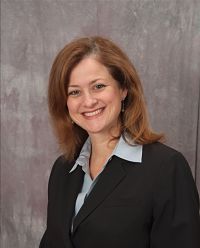 Earnings credit rate (ECR) programs, a long-time featureof U.S. business banking, are heading overseas. Banks are preparingto offer the products outside the United States in response tocustomer demand and because they think it will help them to complywith new measures of deposit stability to be imposed by BaselIII.
Earnings credit rate (ECR) programs, a long-time featureof U.S. business banking, are heading overseas. Banks are preparingto offer the products outside the United States in response tocustomer demand and because they think it will help them to complywith new measures of deposit stability to be imposed by BaselIII.
ECR arrangements provide companies with implied interest ontheir balances that they can then use to offset their bank fees.Banks that are expanding ECR outside of North America include Bankof America Merrill Lynch, Citibank and J.P. Morgan TreasuryServices.
|While compensating balance arrangements have occurred informallyoutside the United States before now, “a more formal mechanicalprocess is what some banks are beginning to roll out in response toBasel III,” according to Greg Kavanaugh, head of the globalliquidity product team at Bank of America Merrill Lynch.
|“We're aware of several global and regional banks that areexperimenting with ECR outside of the U.S.,” added David Robertson,a partner and director at consultancy Treasury Strategies.“Basically they're piloting it to their largest and mostsophisticated clients.”
|ECR evolved after Reg Q, enacted in 1933 amid the GreatDepression, barred U.S. banks from paying interest on companies'demand deposits. Banks instead offered to forgo fees for theservices they provided to companies if companies held a certainamount of deposits at the bank. In the 1970s, when interest ratesbegan to rise, those arrangements were formalized as the earningscredit rate, Robertson said.
|Now Basel III's emphasis on the stability of banks' funding isleading U.S. financial institutions to offer ECR more widely. BaselIII measures funding stability with two ratios, the liquiditycoverage ratio for short-term funding and the net stable fundingratio for long-term funding.
|“As banks prepare to comply with Basel III, Treasury Strategiesis doing a lot of modeling of how different products combine tomake deposits more or less volatile,” Robertson said. “What ECRdoes is, it says, 'This client is holding $10 million of balancesto pay for services and I can prove those are sticky becausethey're getting this earnings credit rate.' These balances aredriven by the relationship. In fact, the client is holding thesebalances specifically to pay for the transactional relationship,”he said.
| Erin Oswalt,who heads global revenue management for the global transactionservices unit at BofA Merrill, said that the deposits involved inECR arrangements “are closely tied to core operating activity—corepayments and receivables. From a funding perspective, operatingcash is a great funding source for a bank because it tends to bevery stable over time,” said Oswalt, pictured at left.
Erin Oswalt,who heads global revenue management for the global transactionservices unit at BofA Merrill, said that the deposits involved inECR arrangements “are closely tied to core operating activity—corepayments and receivables. From a funding perspective, operatingcash is a great funding source for a bank because it tends to bevery stable over time,” said Oswalt, pictured at left.
BofA Merrill has also seen increasing interest frommultinational companies in using ECR outside the U.S., Oswalt said.“Clients are increasingly global, increasingly looking to how toleverage best practices from one region to another, and generallylooking to use more centralized practices. So they're looking formore consistency from their bank in billing methodology.”
|BofA Merrill plans to roll out an ECR program “in a number ofregions” outside the U.S. in the next six to eight months, Oswaltsaid.
|J.P. Morgan Treasury Services will also offer ECR outside ofNorth America, starting with the local in-country introductions ofECR in the Europe, Middle East, Asia and Latin America regions andthen linking it to a global ECR infrastructure shortlythereafter.
|ECR benefits both corporate customers and financialinstitutions, according to Chris Foskett, global head of treasuryservices sales at J.P. Morgan. “It enables companies to consolidatebanking fees across the globe, leverage the value of their balancesand, ultimately, reduce the expense of banking services,” hesaid.
|In North America, J.P. Morgan has expanded its ECR offering byallowing companies to use the implied interest on their balances topay for a wider range of services, such as merchant servicing feesand interchange. Traditionally, ECR could only be used to offsetfees related to the bank account, including wires and ACH charges.“We are looking at new applications of ECR with a multitude of thefirm's investment and corporate banking products,” Foskettsaid.
|Michael Berkowitz, North America head of liquidity managementservices and corporate market management for Citi Treasury andTrade Solutions, said Citi, which already lets corporates use U.S.ECR balances to offset fees outside of the U.S., is in the processof allowing them to use balances outside the U.S. to offsetfees.
|At the same time banks are consideringoffering ECR overseas, the 2011 repeal of Reg Q raises the prospectthat its use may decline in the United States. But even thoughbanks introduced interest-bearing checking in the wake of therepeal, companies have been sticking with ECR.
|“The corporate client base hasn't really changed theirbehavior,” Oswalt said. “They haven't wanted to move away fromECR.”
|That reflects the “convenience and ease of use” ECR offerstreasury departments, she said. “It's not just the math of thecredit and the rate, it's also that they don't have to dedicateresources to managing the day-to-day flows. They can enjoy thatfull liquidity, have the cash when they need it but still get areturn on idle balances,” Oswalt said.
| Treasury Strategies'Robertson, pictured at right, agreed that U.S. companies haven'tshown much interest in the interest-bearing checking accounts banksrolled out, but noted that banks have offered companies a betterrate on ECR than on interest-bearing checking.
Treasury Strategies'Robertson, pictured at right, agreed that U.S. companies haven'tshown much interest in the interest-bearing checking accounts banksrolled out, but noted that banks have offered companies a betterrate on ECR than on interest-bearing checking.
“There was no point for a company to get interest checking,” hesaid, but noted that that may change as interest rates rise. “In ahigher rate environment, I think we'll see much more adoption ofinterest checking.”
|John Grout, policy and technical director at the Association ofCorporate Treasurers in London, questioned how much interesttreasurers outside the U.S. would have in ECR.
|“I can see an advantage for the bank but I don't see anadvantage for the company,” Grout said. “It's less accounting forthe company but most corporates would much prefer to have clarity –clarity of what the charges are, clarity of what the interestis.”
|Robertson said that while banks can probably sell ECR to U.S.multinationals familiar with the product, other companies might bemore reluctant. Many executives in other countries won't befamiliar with ECR, he said, and suggested the product will onlytake off overseas if banks use some promotional muscle.
|“You're going to have to invest some time as a bank to explainhow it works,” Robertson said. “To some extent, I think whether ittakes off depends on whether any bank out there is going to promotethe heck out of it and use it to promote new clientrelationships.”
|Complete your profile to continue reading and get FREE access to Treasury & Risk, part of your ALM digital membership.
Your access to unlimited Treasury & Risk content isn’t changing.
Once you are an ALM digital member, you’ll receive:
- Critical Treasury & Risk information including in-depth analysis of treasury and finance best practices, case studies with corporate innovators, informative newsletters, educational webcasts and videos, and resources from industry leaders.
- Exclusive discounts on ALM and Treasury & Risk events.
- Access to other award-winning ALM websites including PropertyCasualty360.com and Law.com.
*May exclude premium content
Already have an account? Sign In
© 2024 ALM Global, LLC, All Rights Reserved. Request academic re-use from www.copyright.com. All other uses, submit a request to [email protected]. For more information visit Asset & Logo Licensing.







